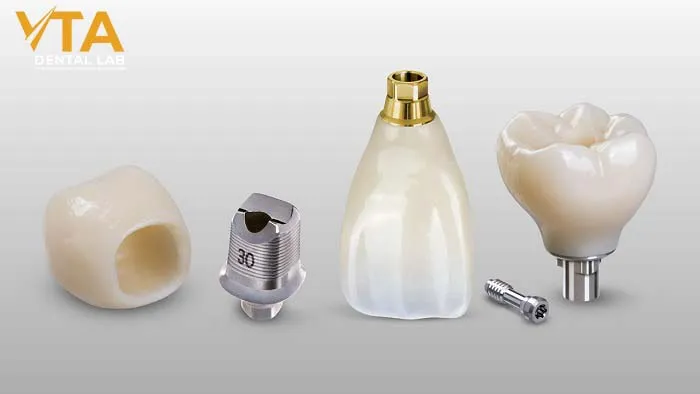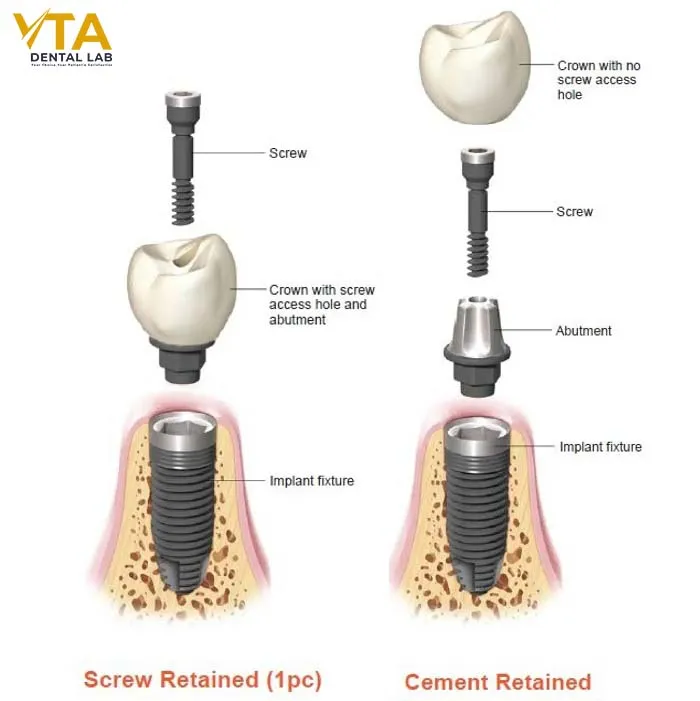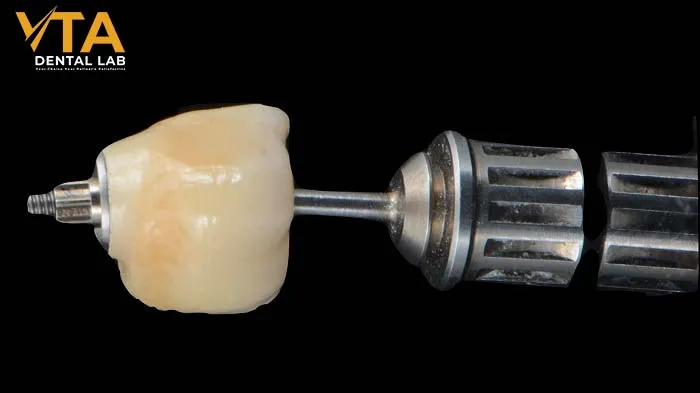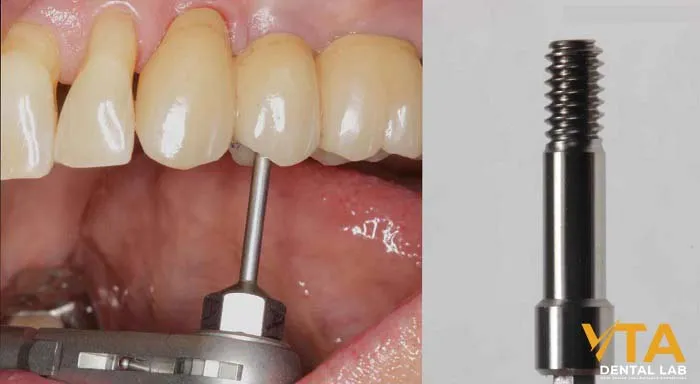Screw-Retained Crown in the Implant Restorations
When it comes to dental restorations, achieving durability, precision, and aesthetics is essential. A screw-retained crown has emerged as a modern and reliable choice among the many options available. In this article, we’ll explore everything you need to know about screw-retained crowns and why they are preferred in restorative dentistry.
What is a screw-retained crown?
A screw-retain crown is a type of dental restoration that attaches to the implant post or abutment using a small screw. After healing, the implant post will form a strong and stable foundation for your crown to be screwed onto.

Technical complications when attaching a crown to an abutment are nearly nonexistent, as the application and installation process is straightforward. However, if an issue does arise, removing, repairing, cleaning, and even directly observing the soft tissue is significantly easier. Diagnosing and treating complications also becomes much simpler. Additionally, despite wear and tear happen, tightening a screw is much easier, especially compared to removing and replacing cement.
Manufactured using dental CAD/CAM technology, screw-retained crowns ensure a precise fit and quick installation. These screw-retained porcelain crowns offer an efficient, cement-free solution, minimizing chair time during the final appointment.
Applications in Dental Implant
- Single-tooth dental implants: These are used to replace missing teeth.
- Multi-Unit dental implants: Supporting multiple teeth with fewer implants.
- Full-Arch Restorations: Common in treatments like All-on-4, and All-on-6 where a full set of teeth is anchored to implants.
The Restorative Space Needed For a Screw-retained Crown
Screw-retained crowns have an advantage in cases with limited interocclusal space because they require less restorative space.
The restorative space refers to the measurement from the implant platform to the opposing arch, which will be occupied by the future crown. The minimum space required for a screw-retained crown is 3.5–6mm: 1mm from the implant platform to the titanium edge, 4mm for the height of the titanium structure, and 1mm for the crown. Other materials may require additional occlusal clearance.

The Benefits of Screw-retained Crowns
The Screw-retained Crown offers many distinct advantages, with one of the most notable benefits being that the crown is securely fixed with a screw, which is simple, effective, and can easily be removed if any technical or biological complications arise. For dentists concerned about reducing patient chair time, the Screw-retained Crown is an ideal choice.

However, the greatest advantage of this restoration type is that it does not use cement, eliminating concerns about cement cleaning. At VTA, we recommend using full solid zirconia, HT Zirconia, e.Max, PFM, and Metal Alloys materials for Screw-retained Crowns, depending on the restoration type and aesthetic needs of the situation.
These materials are highly regarded for their aesthetics and durability. They are milled using high-precision CAD/CAM technology, ensuring a perfect fit for each patient case and facilitating a smooth procedure in the clinic.
Considerations and potential cons of screw-retained implant crowns
Although screw-retained crowns offer many advantages, there are also some considerations and potential drawbacks to be aware of:
- Restorative Space: Screw-retained crowns require adequate vertical and horizontal space for proper placement. In some cases, additional procedures may be necessary.
- Screw Loosening: Over time, the screws may loosen and need maintenance if the crown is subjected to excessive chewing forces.
- Higher Cost: Screw-retained crowns may require more complex manufacturing technologies (such as CAD/CAM systems), making them slightly more expensive than traditional cement-retained crowns.

Screw-Retained Crowns vs. Cement-Retained Crowns
Choosing between a Screw-Retained Crown and a Cement-Retained Crown can depend on the available restorative space and the angle at which the implant is placed. Screw-Retained Crown restorations have an advantage in cases where the occlusal space is limited.
Cement-retained restorations require a minimum space of 7-8mm between the arches. For example, 3mm for soft tissue height, approximately 4mm for the abutment post, and 1mm for the crown.
| Feature | Screw-Retained Crowns | Cement-Retained Crowns |
| Maintenance | Easily removable | Requires cutting for removal |
| Cement Residue Risk | None | Possible |
| Aesthetic Appearance | May have a visible access hole | Seamless appearance |
| Accessibility | Easy for adjustments | Difficult once cemented |
Ultimately, the choice between screw-retained and cement-retained crowns depends on factors like the implant’s location, aesthetic preferences, and the need for future adjustments or repairs.
In conclusion, screw-retained crowns offer a reliable and versatile solution for implant restorations, combining ease of maintenance with precise functionality. Whether chosen for their removability or their alignment advantages, they provide both dentists and patients with peace of mind. By partnering with VTA Dental Lab, you can ensure superior quality and craftsmanship, delivering exceptional results for every smile.